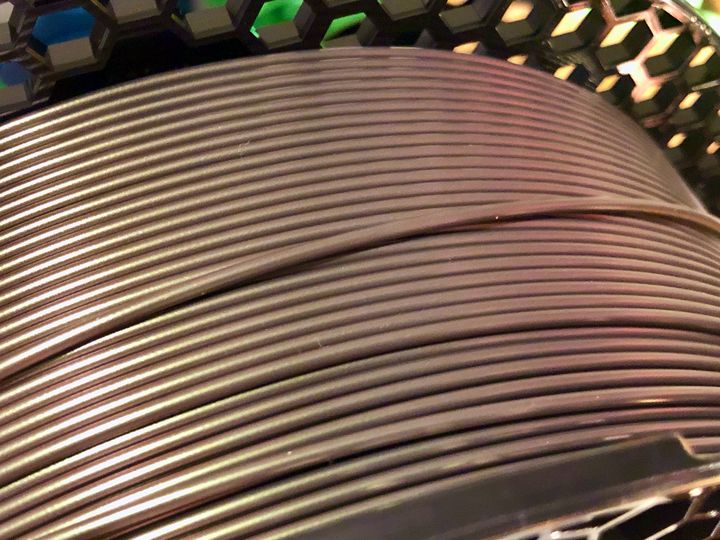
On a tip I took a look at how desktop 3D printer filament is priced by major suppliers and found something quite interesting.
Direct Sales or Reselling
Filaments are sold either directly by the manufacturer or through resellers. Resellers buy filament at a discounted price due to their volume purchases, and then resell the products at a (hopefully) slight markup to the public.
Direct sales occur when the manufacturer offers sales to the public from their own online store. This is not a common practice, as there is a significant problem with filament sales: shipping costs.
For a somewhat inexpensive product, the cost of shipping overseas to distant locations can be prohibitive and in some cases even exceed the cost of the product. This is one of the main reasons why resellers exist: to accept bulk shipments over long distances and then sell regionally using cheaper shipping options.
The tip related to how filament prices are set among online stores. It turns out some online filament stores allow the buyer to pick from several different currencies for their purchase. This is convenient for the buyer and the seller, who is attempting to sell product worldwide. That’s different than resellers who tend to be regional and thus offer only a single currency option.
Comparing Filament Prices In Different Currencies
The question is, are the prices the same in different currencies? Theoretically they should be the same, but I inspected the pricing at several filament manufacturers’ online stores to find out.
colorFabb is one of the most notable players in the 3D print materials market, and while they sell their products through resellers, they also operate an online store from which anyone can purchase materials. The store also offers the ability to change the price into different currencies. Here’s what I found when pricing out a 2.2kg spool of basic ECONOMY BLACK PETG
| Currency | Price | USD Equivalent |
| EUR (Europe) | 48.40 | 54.73 |
| AUD (Australia) | 78.45 | 54.51 |
| GBP (UK) | 43.32 | 54.72 |
| CAD (Canada) | 74.19 | 54.48 |
| CNY (China) | 382.03 | 54.56 |
| JPY (Japan) | 5857.46 | 54.84 |
| USD | 54.62 | 54.62 |
These prices are almost identical, only a few cents different. It’s likely colorFabb’s store is dynamically converting the prices into each currency. Why else to specify Japanese Yen to six-figure accuracy?
Let’s look at another producer, Filamentum. This company offers two direct sales stores, one based in Europe and one in the US. For PLA Extrafill Chocolate Brown filament I found the pricing as follows:
| Currency | Price | USD Equivalent |
| EUR | 21.00 | 23.74 |
| USD | 33.99 | 33.99 |
Here it seems that the USD value for the same product is quite a bit higher, 43%, in fact. Why such a difference? It’s likely the US store is including a surcharge to account for the shipping from Europe for the materials, or perhaps they feel US customers are willing to pay more for the product.
In that situation you might think it would be cheaper to buy from Filamentum’s European store and ship it elsewhere. However, their shipping fees are significant to some non-European locations. For example, to ship the European spool to a US location, they will charge EUR 26 (USD 29), meaning a landed price of USD 52.74. Their US store charges only USD 13 for shipment, yielding a total of USD 47.04 for the same spool delivered. This is the regional shipping effect in action.
Most other filament manufacturers don’t sell direct, or they offer products only in a single currency. However, I found one provider has some very interesting results. Prusa Research’s web store offers their popular Prusament filament with several different currency options. Here’s what I found for their PETG Jet Black 1kg spool:
| Currency | Price | USD Equivalent |
| USD | 29.99 | 29.99 |
| CZK (Czechia) | 578 | 24.53 |
| EUR (Europe) | 24.79 | 28.03 |
| GBP (UK) | 22.06 | 27.87 |
| PLN (Poland) | 96.73 | 24.49 |
This is quite strange, as the shipping costs would be the same. It suggests you could purchase the same product at a lower price by, say, paying in Polish Zlotys. That’s 18% less expensive!
It may be that Prusa Research is pricing their products slightly different to competitive levels in each of those regions, yet it seems those outside the regions could access the same pricing.
The bottom line here is that when buying filament you should always shop around — and even shop around WITHIN the online store.
